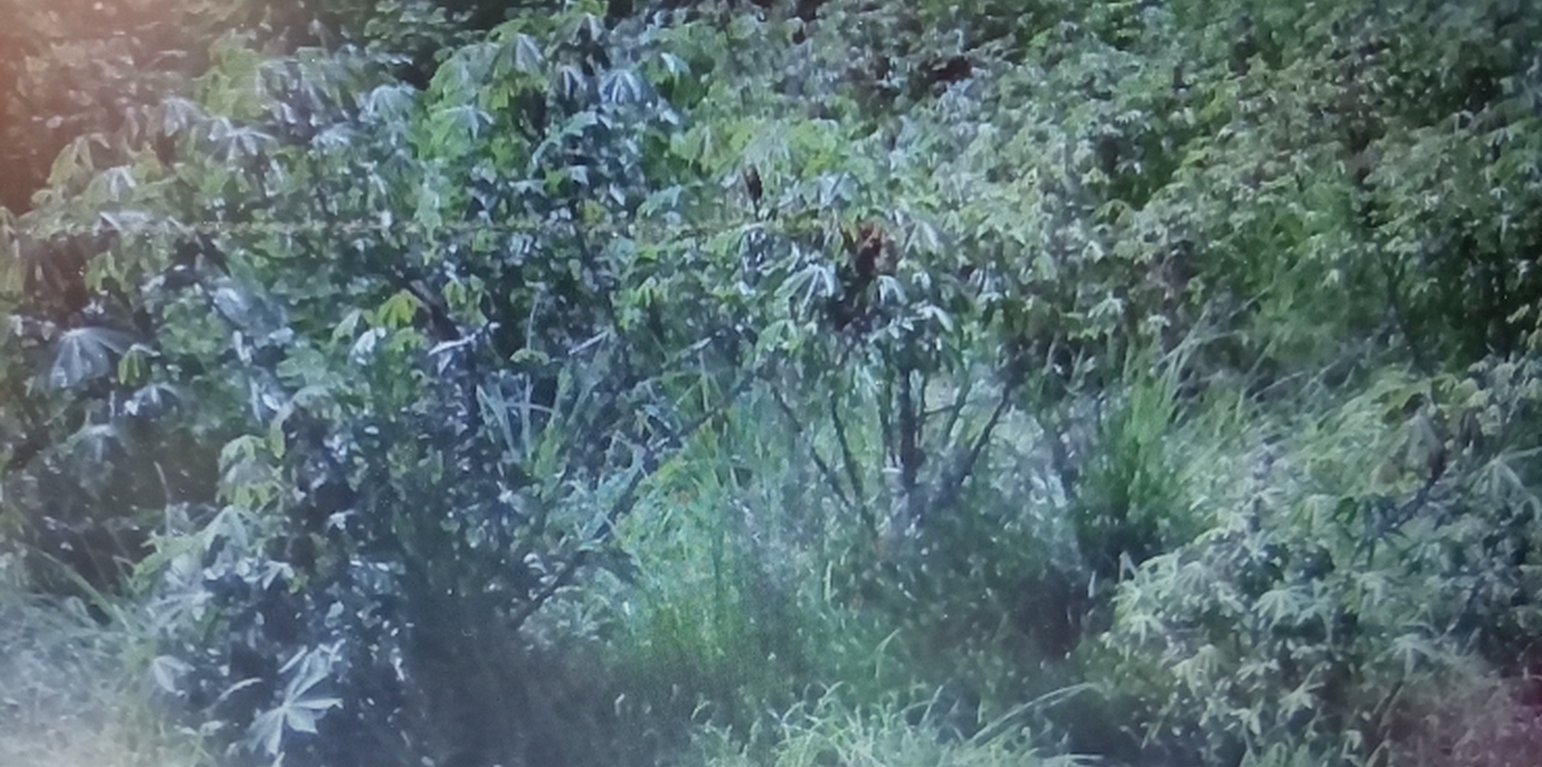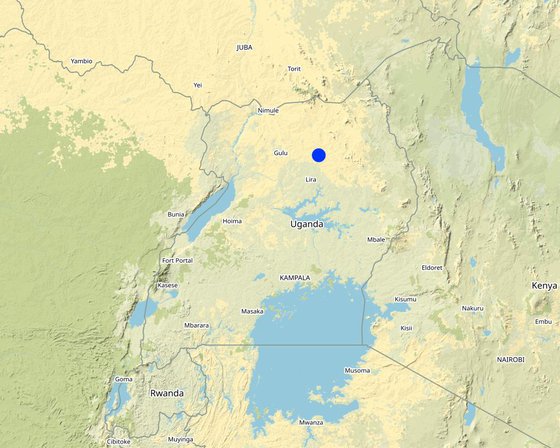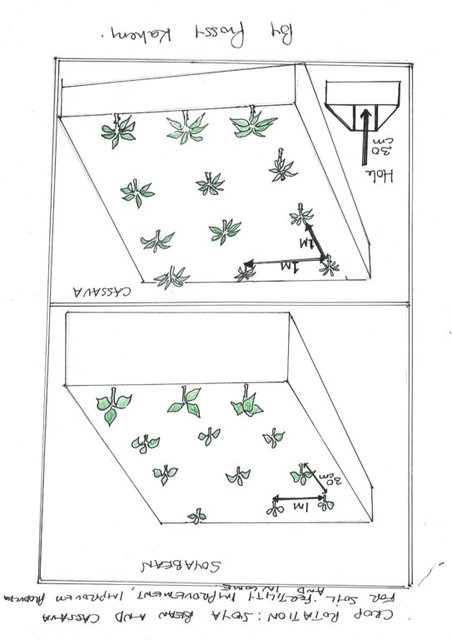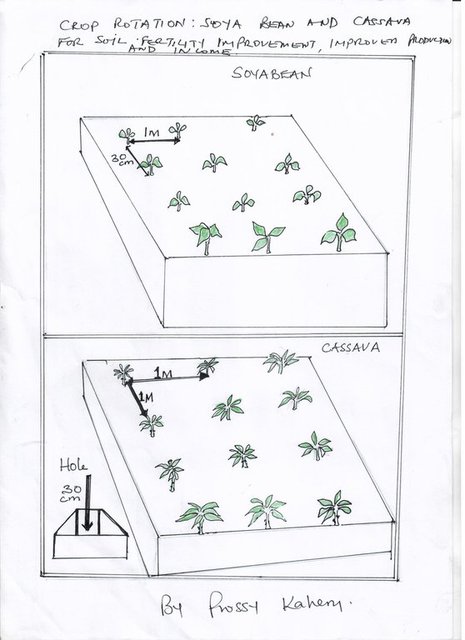



With crop rotation, a crop that leaches the soil of one kind of nutrient is followed during the next growing season by a another crop that returns that nutrient to the soil or draws a different ratio of nutrients.
At the start of the season, soybean was planted on a gently sloping land in rows in a spacing of 1 meter between the rows and 30 cm between the plants. In the subsubsequent year, cassava tuber stems were cut at a length of 30 cm and planted in a hole of 30 cm depth and a spacing of 1 meter using the following required in puts: seed, hired labour, tractor, ox-plough, hoes and pangas (axes). This technology integrated as well the construction of trenches within the field for soil and water conservation.
The application of this technology increased crop yields as evidenced by the land user. Crop rotation mitigates as well the build up of pathogens and pests that often occur when one species is continuously cropped in the same location. Crop rotation improves soil structure and fertility by increasing subsoil biomass from various root structures. While promoting this practice, its important that the landuser plants as well legumes for nitrogen fixation after cropping a nitrogen depleting crop. Similarly, a low residue crop (i.e. a crop with low biomass) should be followed by a high biomass crop, like a mixture of grasses and legumes.
The application of this technology requires the land user to subdivide the land into different portions for different crops. Crops could be planted in the following manner: 1) Cereals crop with legumes, 2) Deep rooted with shallow rooted and a cover crop.
Important to note is that crop rotation is good at preventing soil depletion, maintaining soil fertility, reducing soil erosion, controlling insect/mite pests, reducing reliance on synthetic chemicals, reducing the pests' build-up and controlling weeds. On the other hand, crop rotation can be dangerous and may affect a following crop with diseases originating from the first crop.

Location: Town council, Agago District , Arum Sub-county, Kazikazi Parish , Arum Village., Uganda
No. of Technology sites analysed: single site
Spread of the Technology: evenly spread over an area (approx. 0.1-1 km2)
Date of implementation: 2015
Type of introduction






| Specify input | Unit | Quantity | Costs per Unit (UGX) | Total costs per input (UGX) | % of costs borne by land users |
| Labour | |||||
| Hired labour | acres | 10.0 | 2500.0 | 25000.0 | 100.0 |
| Equipment | |||||
| Tractor | pice | 1.0 | 70000.0 | 70000.0 | 100.0 |
| Ox-plough | pice | 1.0 | 17000.0 | 17000.0 | 100.0 |
| Axes | pieces | 2.0 | 7000.0 | 14000.0 | 100.0 |
| Pangas | pices | 2.0 | 10000.0 | 20000.0 | 100.0 |
| Hoes | pieces | 5.0 | 10000.0 | 50000.0 | 100.0 |
| Plant material | |||||
| Seeds | 1 | 100.0 | 5000.0 | 500000.0 | 100.0 |
| Total costs for establishment of the Technology | 696'000.0 | ||||
| Specify input | Unit | Quantity | Costs per Unit (UGX) | Total costs per input (UGX) | % of costs borne by land users |
| Labour | |||||
| Mans days for weeding for one month | 1 | 30.0 | 5000.0 | 150000.0 | 100.0 |
| Equipment | |||||
| Hoe | Piece | 5.0 | 12000.0 | 60000.0 | 100.0 |
| Total costs for maintenance of the Technology | 210'000.0 | ||||
Improved yields of cassava crop
Quality cassava tubers harvested due to abundant plant nutrients through crop rotation
Reduced expenses through crop rotation e.g. savings on mineral fertiliser due to the integration of legumes into the crop rotation system.
High income earned after sale of quality cassava obtained through crop rotation.
Crop rotation increases cassava yield which improves food security.
Good knowledge of crop rotation.
Surface run-off controlled through active water collection measures.
Crop rotation recycles plant nutrients into the soil.